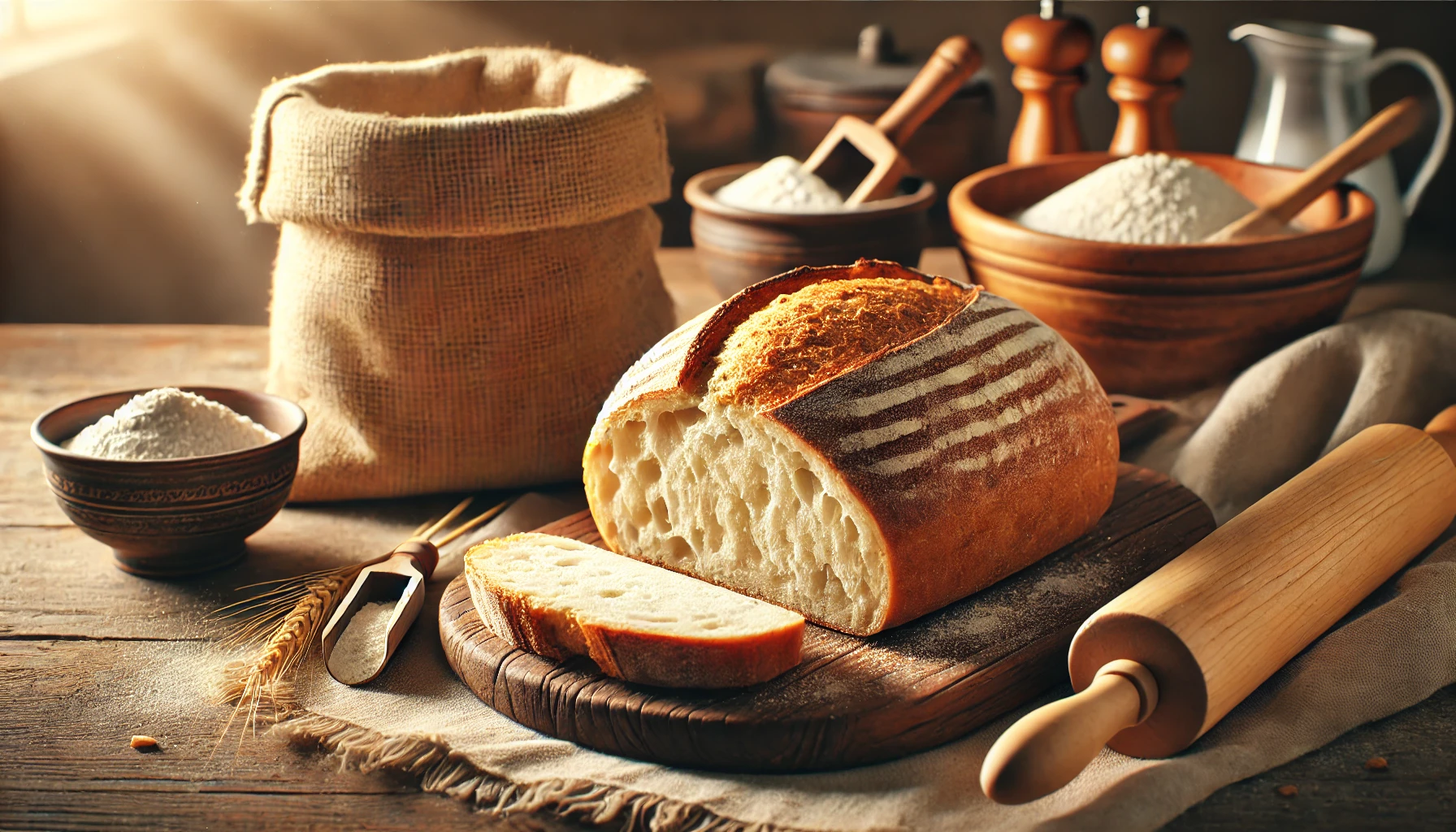Making bread at home might seem like an impossible mission at first—like wrangling a stubborn toddler or convincing your cat to love baths. But with a little patience and the right guidance, you can create bakery-worthy bread in your kitchen. So, if you’re ready to learn the secrets to achieving a golden, airy loaf, this guide will show you how. Let’s dive into https://me-encantas.com/2021/05/18/5-consejos-para-hacer-el-mejor-pan and discover what it takes to bake like a pro!
1. Choose High-Quality Ingredients
Good bread starts with great ingredients. Think of it as the difference between cooking with fresh herbs versus the dried ones that expired three years ago.
a. Start with the Right Flour
The type of flour you use can make or break your bread. Bread flour is the hero here, thanks to its higher protein content, which helps create the chewy texture and structure we all love. If you’re feeling adventurous, try unbleached or organic options for that extra touch of flavor and nutrition.
b. Fresh and Active Yeast
Yeast is like the life of your bread party. Without it, there’s no rise—literally! Active dry yeast, instant yeast, or even fresh yeast can all work wonders, but make sure it’s fresh. Expired yeast is a recipe for bread that’s as flat as a pancake. Test it by dissolving in warm water with a pinch of sugar; if it bubbles up like a science experiment, you’re good to go!
c. Water Quality Matters
Water might seem like a minor player, but it’s actually a big deal. Tap water loaded with impurities can mess with fermentation, so filtered or bottled water is your best bet. Think of it as pampering your dough with spa-quality hydration.
d. The Secret Weapon: Salt
Salt isn’t just about flavor—it’s also a gluten enhancer and yeast tamer. Use fine sea salt or kosher salt for the best results. Just be precise; a pinch too much, and your bread could taste like it took a dive in the ocean.
2. Master the Kneading Process
If flour is the backbone of your bread, kneading is the heart. It’s the step where all the magic happens (or where you get a mini arm workout).
a. Why Kneading is Crucial
Kneading develops gluten, the stretchy network that traps air and gives bread its structure. It transforms a shaggy mess into a smooth, elastic dough—like a glow-up for your ingredients.
b. Techniques for Success
- Hand-Kneading: Push, fold, and stretch the dough rhythmically. Think of it as therapeutic—like yoga, but for your dough.
- Stand Mixer: Let the dough hook do the heavy lifting, but don’t crank up the speed. Low and slow wins the race.
c. The Windowpane Test
Wondering if you’ve kneaded enough? Stretch a small piece of dough between your fingers. If it forms a thin, translucent “windowpane” without tearing, it’s ready to shine.
3. Nail the Fermentation Stages
Fermentation isn’t just about waiting—it’s about giving yeast the time it needs to do its thing. Think of it as the Netflix binge session your dough deserves.
a. Bulk Fermentation (First Rise)
During this stage, yeast feasts on sugars, creating the gas bubbles that make your bread rise. Place your dough in a lightly oiled bowl, cover it, and let it rest in a warm spot. It should double in size—kind of like your confidence as a baker.
b. Shaping the Dough
Once the first rise is done, punch down the dough (gently—no bread abuse, please!) and shape it. Whether it’s a loaf, rolls, or a freeform masterpiece, make sure the dough is smooth and even.
c. Proofing (Second Rise)
This is the final rest before the oven takes over. Let the shaped dough rise until it’s puffed and airy. Over-proofing can lead to deflated bread, so keep an eye on it.
4. Baking Like a Pro
Now comes the moment of truth—baking! Get this step right, and you’ll be pulling out a masterpiece worthy of its own Instagram post.
a. Preheating the Oven
Always preheat your oven like your bread’s life depends on it—because it does. A hot oven ensures a quick rise and a golden crust. Temperatures typically range between 375°F and 475°F (190°C to 245°C), depending on the recipe.
b. Create Steam for the Perfect Crust
Want a crust that’s crisp and crackly? Add steam to your oven. Place a pan of water on the oven floor or mist the dough with water. It’s like a sauna session for your bread!
c. When is Bread Done?
Bread isn’t shy about telling you it’s ready. A golden-brown crust, a hollow sound when tapped on the bottom, or an internal temperature of 190°F to 210°F (88°C to 99°C) are all green lights.
5. Cooling and Storing Your Bread
Resist the urge to slice into that fresh loaf immediately—cooling is key for the perfect texture.
a. The Importance of Cooling
Place your bread on a wire rack and let it cool completely. This prevents sogginess and ensures the crumb sets properly.
b. Proper Storage for Freshness
Keep your bread in a bread box or paper bag at room temperature for up to three days. For longer storage, wrap it in plastic or foil and freeze. Pro tip: Avoid the fridge—it’s a bread killer.
c. Reviving Stale Bread
If your bread loses its charm, don’t worry! A quick trip to the oven with a spritz of water can bring it back to life.
Bonus Tips for Creative Bread Baking
- Experiment with Add-ins: Herbs, seeds, or even cheese can elevate your bread game.
- Explore New Styles: Try sourdough, whole grain, or baguettes for variety.
- Learn and Improve: Keep notes on what works and what doesn’t. Every loaf is a learning experience!
Conclusion
Making bread at home isn’t just about the end result—it’s about the journey. By following these five essential tips, you’ll soon be baking loaves that rival the best bakeries. So grab your apron, roll up your sleeves, and get ready to master https://me-encantas.com/2021/05/18/5-consejos-para-hacer-el-mejor-pan. Your kitchen (and your taste buds) will thank you!





